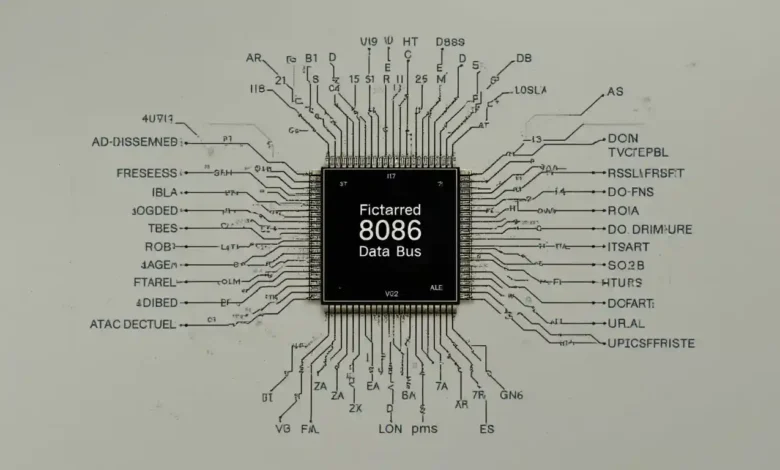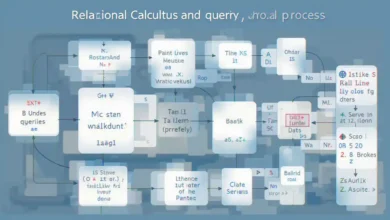The Pin Diagram of 8086 Microprocessor: A Comprehensive Guide

Introduction
The 8086 microprocessor is a significant milestone in the history of computing, credited with laying the foundation for modern computer architectures. Understanding the pin diagram of the 8086 is crucial for anyone interested in computer engineering or electronics. This blog post delves into each pin’s function and its relevance in system design.
Overview of the 8086 Microprocessor
Before examining the pin diagram of the 8086, it’s essential to understand its architecture and capabilities. The 8086 is a 16-bit microprocessor known for its powerful instruction set and the ability to handle complex computing tasks efficiently.
Pin Configuration of 8086
The pin diagram of the 8086 microprocessor reveals a total of 40 pins, each with a specific function, including data handling, address output, and control functions. This section explores the layout and categories of these pins.
Power Supply and Clock Pins
The operation of the 8086 microprocessor depends on critical pins supplying power and delivering the clock signals. This part explains the roles of VCC, GND, and CLK pins in the microprocessor’s functionality.
Data Bus Pins
The data bus pins (D0-D15) of the 8086 are bidirectional, allowing data to flow both into and out of the microprocessor. This segment discusses how data transactions occur through these pins.
Address Bus Pins
The address bus pins (A0-A19) on the pin diagram of the 8086 play a pivotal role in memory interfacing, allowing the microprocessor to access memory locations. We’ll look into their operations and significance.
Control and Status Signals
Control and status pins such as RD, WR, READY, and INTR guide the microprocessor’s interactions with peripherals and memory, influencing its control logic and operational state.
Interrupts and Hardware Signaling
Understanding the interrupt pins (INTR, NMI) and hardware control signals (TEST, RESET) in the pin diagram of the 8086 is crucial for leveraging the microprocessor’s full capabilities, especially in multitasking environments.
Minimum and Maximum Mode Configuration
The pin diagram of the 8086 includes configuration pins that determine the operational mode—minimum or maximum. This distinction is vital for system designers aiming to optimize the processor’s role in different computing environments.
Bus Interface Control
Pins like BHE, DEN, and DT/R denote how the 8086 interfaces with other components on the bus. These pins are essential for ensuring data integrity and correct sequence operations within bus cycles.
System Design Considerations
Integrating the 8086 into a system requires a thorough understanding of its pin diagram and functionalities. This section covers practical tips for designers on interfacing the 8086 with other components to build efficient systems.
Conclusion
The pin diagram of the 8086 microprocessor is a gateway to understanding its capabilities and how it interacts with other parts of a computer system. By familiarizing oneself with each pin’s role, engineers and enthusiasts can design more effective and innovative computing solutions.
FAQs
Q1: What is the significance of the pin diagram of 8086 in modern computing?
A1: Although older, the 8086 microprocessor’s design principles and pin functionalities influence current microprocessor designs, offering a foundational understanding of CPU architecture.
Q2: How does the address bus in the pin diagram of the 8086 enhance its capabilities?
A2: The address bus allows the 8086 to access up to 1MB of memory, which was a significant capacity during its era, enabling more complex applications and software.
Q3: Can the 8086 operate in both single and multi-processor configurations?
A3: Yes, the 8086 can operate in both configurations, determined by the MN/MX pin. This flexibility allows it to be used in a variety of computational settings.
Q4: What role do the control and status pins play in the functionality of the 8086?
A4: These pins manage the communication and synchronization between the processor and peripherals, crucial for the efficient execution of instructions and tasks.
Q5: How does understanding the pin diagram of the 8086 help in system troubleshooting and maintenance?
A5: Knowledge of the pin diagram helps diagnose issues related to data flow and control signals, essential for maintaining systems running on the 8086 or its compatible successors.




